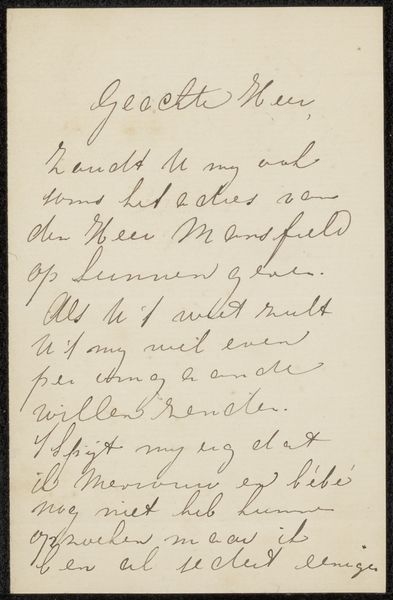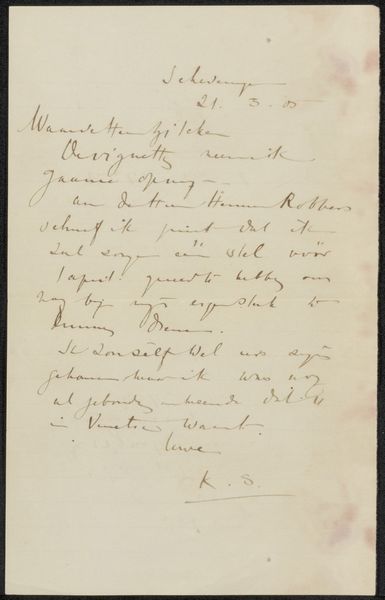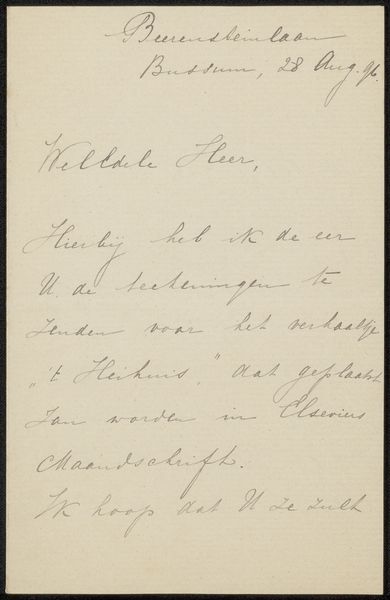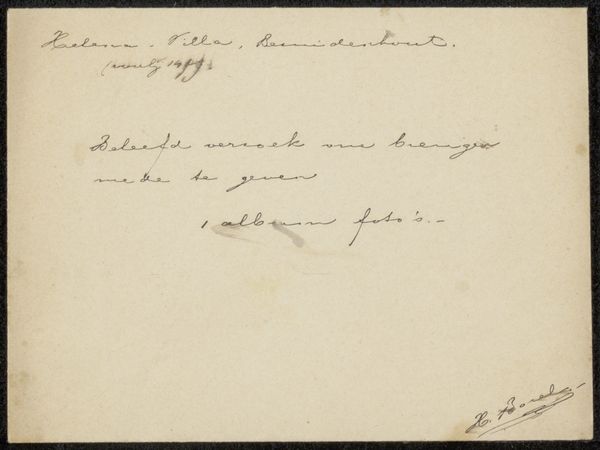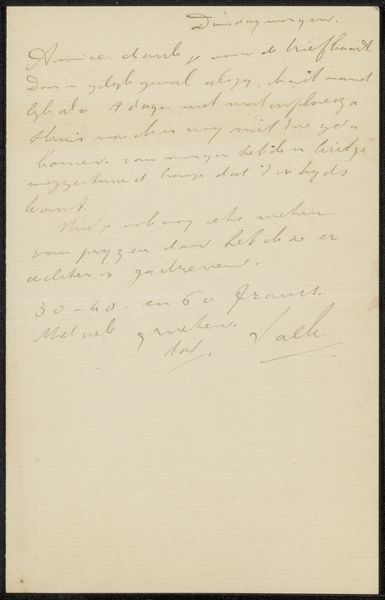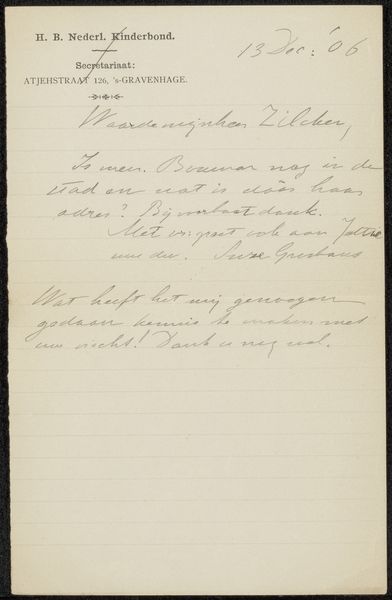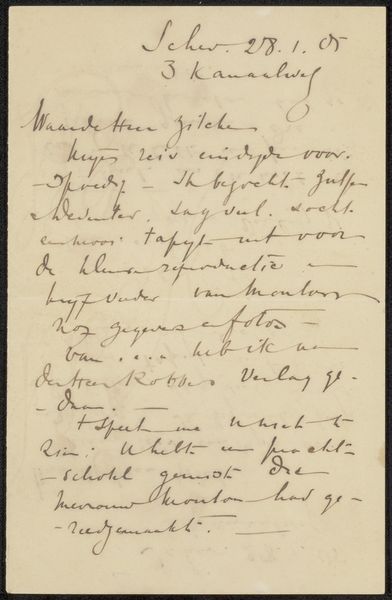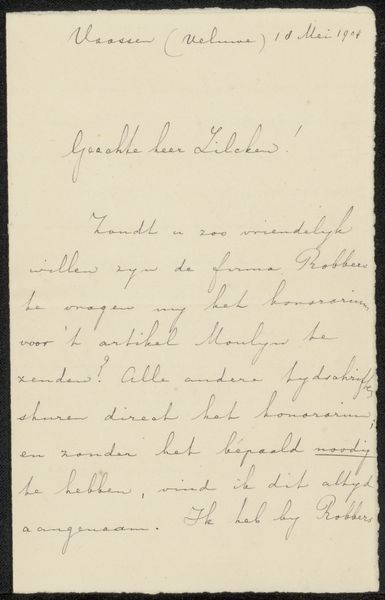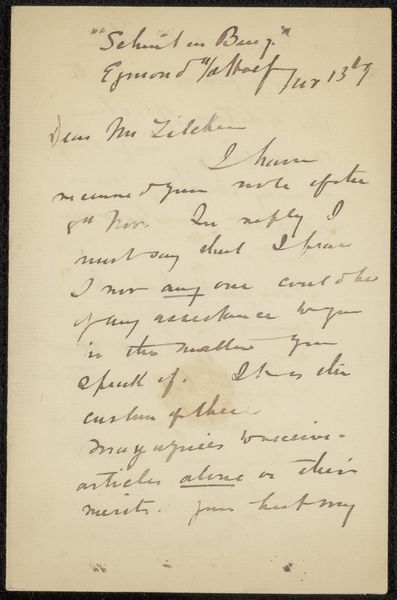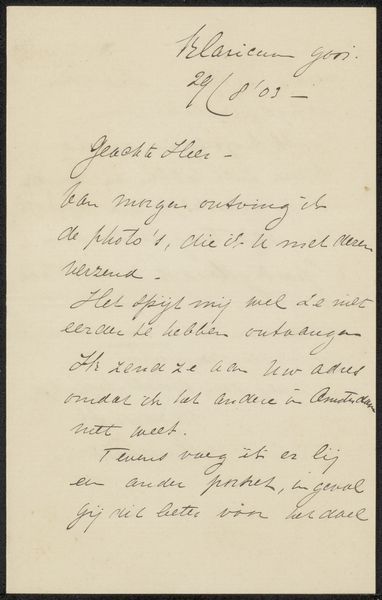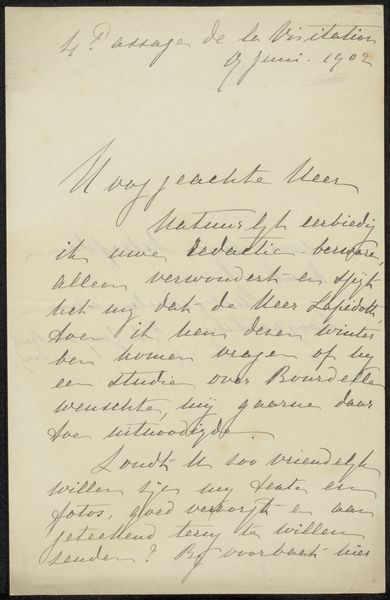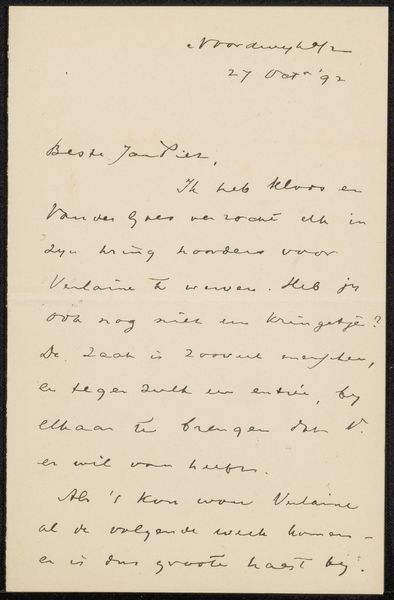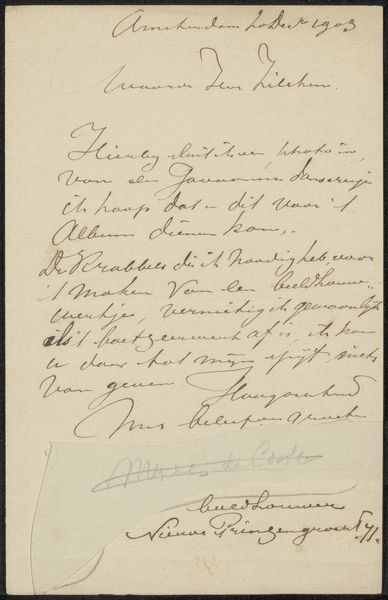
drawing, textile, paper, ink, pencil
#
portrait
#
drawing
#
textile
#
paper
#
ink
#
pencil
#
academic-art
Copyright: Rijks Museum: Open Domain
Editor: So, this is "Brief aan Philip Zilcken" by Marie Metz-Koning, likely created sometime between 1888 and 1905. It's a letter, rendered in pencil and ink on paper, and mounted on textile. What jumps out to me is the almost ethereal quality of the handwriting. What strikes you most about it? Curator: Primarily, my interest lies in examining the formal qualities of the piece. Note the deliberate arrangement of the text upon the page, its structure; how the strokes of ink articulate a rhythm that transcends the literal message. Observe the variation in pressure used to create a depth that one wouldn’t normally associate with script. This interplay creates a nuanced, visually compelling experience. Does the directionality suggest any narrative intention to you? Editor: I hadn't really considered directionality beyond it being written top to bottom. Does that contribute to the mood, or is it more of a compositional element? Curator: Consider the semiotic potential. A diagonal trajectory, for instance, could suggest urgency or dynamism, while the consistent verticality speaks to control and considered deliberation. It encourages viewers to investigate how the structure of its elements affects their impression. What can we decode from its composition, beyond simply interpreting the text? Editor: So, we can see the text itself almost as the subject, considered apart from its meaning, and analyzed just for its structural and aesthetic qualities. Curator: Precisely. And by employing a systematic framework, we reveal layers of meaning that extend beyond conventional textual interpretation. It’s an exercise in perceiving the inherent order within what might initially seem to be just functional script. What I see here is form elevating function. Editor: I see the value of this approach in understanding art at a different level, finding the underlying composition rather than getting caught up with subject alone. Curator: Exactly, it’s a lesson in appreciating the formal scaffolding beneath any work of art, revealing how deeply interwoven the elements are to shape experience.
Comments
No comments
Be the first to comment and join the conversation on the ultimate creative platform.
